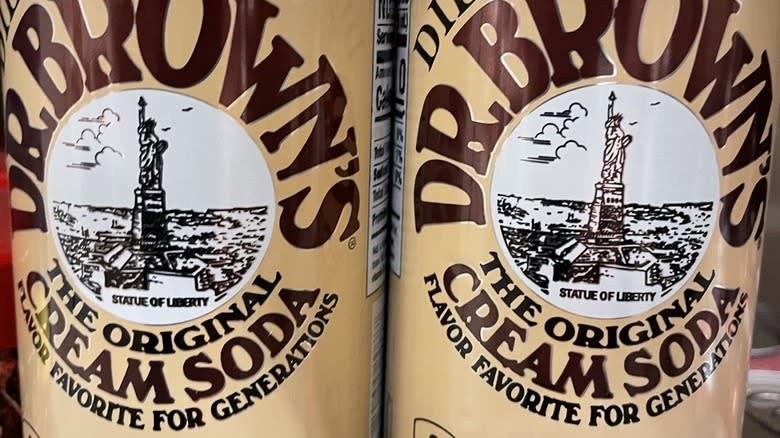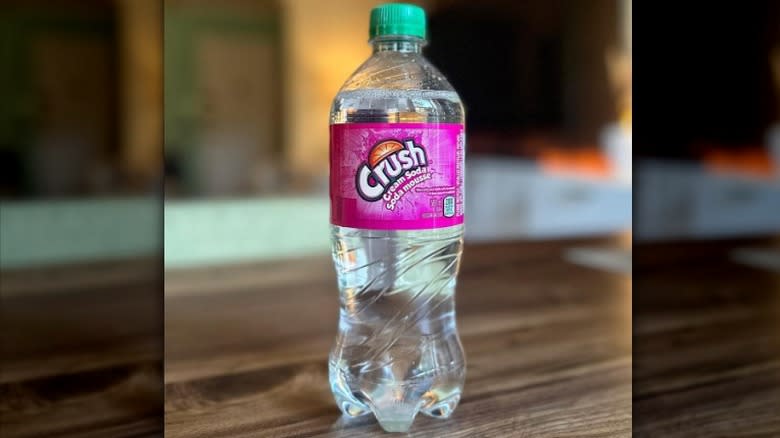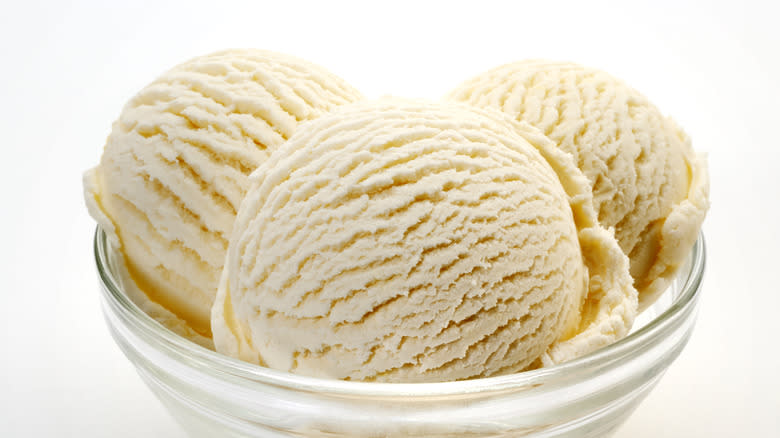The Difference Between American And Canadian Cream Soda

Lemon-lime soda. Cola. Orange soda. Root beer. Whatever dark (yet admittedly delicious) sorcery is happening with Mountain Dew. These are soda flavors with which modern generations are familiar -- but they're not the only ones out there. Though it seems hopelessly esoteric now, there was once a time when cream soda stood alongside the other titans of its industry. Now, you can't really find any major brand that makes it.
It's not surprising that our current cream soda version is different from the original, which involved milk, cream of tartar, Epsom salts, and an egg. (Coca-Cola staying virtually the same since its inception is the exception to product development, not the rule.) But what's surprising is that cream sodas in America and Canada aren't remotely the same. The flavor, the ingredients, and even the color are totally different depending on which side of the border you reside. So what gives?
Read more: The 14 Best Sugar-Free Sodas Ranked
Canadian Cream Soda Tastes More Like Cotton Candy

American cream soda has a few noted purveyors; Barq's makes one, as does A&W, and the best-known version probably comes from Dr. Brown's. Unlike cola varieties, which all pretty much look the same, these versions of cream soda are slightly different; Dr. Brown's is clear, while the other two come in some shade of brown or tan. But they all taste the same (if divisively so among soda aficionados): They're basically vanilla-flavored soda.
It works a little differently in Canada. The primary cream soda brand north of the border is Crush, and the color is not generally familiar to American soda drinkers -- it's bright pink. The flavor actually matches this, being described as far closer to cotton candy than vanilla. It still has that distinctive finish and aftertaste that cream soda brings to the table, though (whether that's a good or bad thing). But why are these sodas even called "cream soda" if they don't contain any cream?
The Human Brain Tends To Associate Vanilla With Cream

The answer, it turns out, is vanilla (which is still present in Canadian cream soda, even if it's not the predominant flavor). There's nothing inherently creamy about vanilla -- it's just a bean used primarily for dessert flavoring -- but we've associated vanilla with ice cream for so long that it's had a pronounced effect on how we perceive it. Studies have been conducted about this; adding a small amount of vanilla to milk makes people think the milk is creamier, even though the cream content has remained the same.
Of course, there are more cream soda varieties than just those from America and Canada. South Africa has a variety that's bright neon green, while there's a variety sold throughout Latin America that's bright red. But what all of them have in common is that vanilla finishes our brains have been trained to see as "creamy." Wherever you go, vanilla seems to mean cream in our brains.
Read the original article on Daily Meal.

